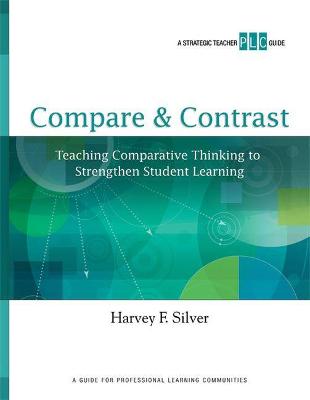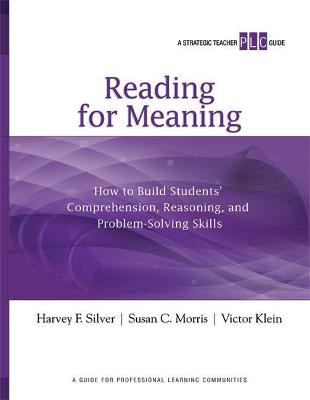Strategic Teacher PLC Guides
3 total works
Here's the perfect tool for implementing the ideas from our best-selling ultimate guide to teaching strategies, The Strategic Teacher. Developed in partnership with over 75 schools, this guide makes it easier and more effective for teams of teachers to engage in professional development using the Compare & Contrast strategy. Included in the guide are activities, sample lessons, student work examples, planning forms, and learning tools that will help you:
Be sure to order enough guides to enable every teacher to engage in all the hands-on learning activities.
- Understand how Compare & Contrast boosts student memory and cements conten.
- Plan an effective lesson using Compare & Contrast.
- Evaluate your lesson and use your experiences to deepen your understanding of the strategy.
- Know what to look for in student work to tell how effective your use of the strategy has been.
Be sure to order enough guides to enable every teacher to engage in all the hands-on learning activities.
When you want to implement the ideas from our ultimate guide to teaching strategies, The Strategic Teacher, here's the tool you need for mastering the Interactive Lecture. Use the activities, sample lectures, and planning forms with a group of teachers to learn:
Be sure to order enough guides to enable every teacher to engage in all the hands-on learning activities.
- What an Interactive Lecture is and how it can help you incorporate memory-enhancing techniques into your instruction.
- How to plan and implement an Interactive Lecture and take a ""test run"" with a critical friend to provide feedback on the lecture.
- How to evaluate the feedback from your first lesson and use it to implement another lesson.
- What to look for in student work to help you improve instructional decision making.
Be sure to order enough guides to enable every teacher to engage in all the hands-on learning activities.
Reading for Meaning
by Harvey F. Silver, Susan C. Morris, and Victor Klein
Published 15 December 2010
Here's a guide that makes it easier to implement the Reading for Meaning strategy from The Strategic Teacher. When you and your colleagues want to explore more ways to help students understand what they read, make inferences, and support their thinking with evidence, this book is your ideal tool. Use the sample lessons, student examples, and planning forms with your professional learning community (PLC) to:
Be sure to order enough guides to enable every teacher to engage in all the hands-on learning activities.
- Understand the thinking skills that students use before, during, and after reading to build deep understanding of their texts.
- Learn how to use Reading for Meaning statements to pique interest in reading assignments and increase students' analytical powers while reading and learning.
- Plan a complete Reading for Meaning lesson for your classroom.
- Use student work to plan next steps in building their reading, thinking, and comprehension skills.
Be sure to order enough guides to enable every teacher to engage in all the hands-on learning activities.


